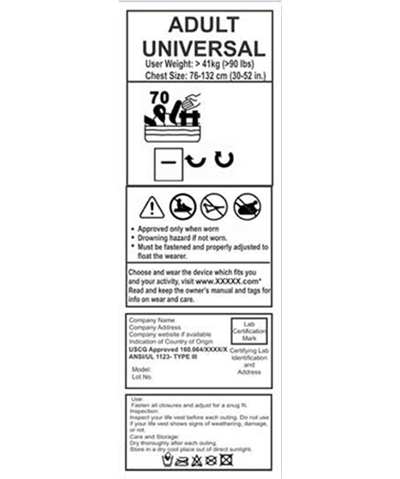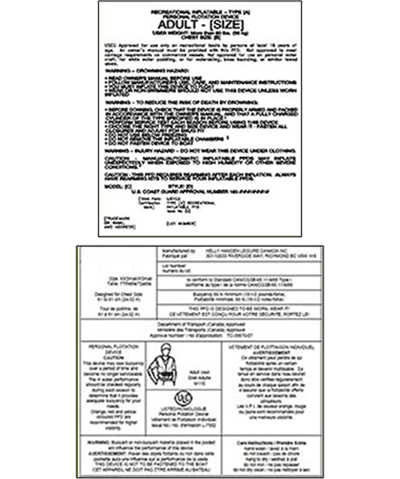
by Bridget Marvinsmith, MD, Family Physician at Appledore Family Medicine
Believe it or not, most boating fatalities happen in calm water, when an unexpected accident occurs and boaters drown because they are not wearing a life jacket. According to the Safe Boating Council, “almost 90% of boating fatalities are due to people not properly wearing a life jacket.” In order to comply with United States Coast Guard regulations, all vessels must contain enough life jackets for all those on board. They must be:
- S. Coast Guard approved
- The proper size for the intended wearer
- In good, usable condition
- Properly stored so that they are readily accessible if needed.
- In general, children under age 13 must wear a life jacket unless they are below deck or in an enclosed cabin. (Note: some states have different age requirements)
Life Jacket Types
Life jackets, or Personal Flotation Devices (PFDs), are categorized as Type I, II, III, IV or V. Types I, II and III are commonly worn by recreational boaters, while Type IV is a throwable device like life rings and buoyant cushions. Type Vs are for special uses. In general, the lower the jacket’s type number, the better the performance. Select a PFD based upon your planned activities and the water conditions you expect to encounter:
| PFD Type: | Type I Offshore Life Jacket |
Type II Inherently (Near-shore) Buoyant Vest |
Type III Flotation Aid |
Type IV Throwable Device |
Type V Special Use Device |
|---|---|---|---|---|---|
| Best for open, rough or remote water, where rescue may be slow. | Good for calm or inland water, or where there is a good chance of fast rescue. | Good for conscious users in inland water and where there is good chance of fast rescue. | Can be thrown to someone. A good backup to wearable PFDs. | More convenient or useful for specific activities. Continuous wear prevents being caught without protection. | |
| Advantages: | Floats the best and turns most unconscious wearers face-up in water. Highly visible color. | Turns some unconscious wearers face-up in the water. Less bulky, more comfortable than Type I. | Generally the most comfortable type for continuous wear. Designed for general boating. Available in many styles, including vests and flotation coats. | Not for unconscious persons, non-swimmers or children. Not for many hours in rough water. | Less safe than other types if not used according to conditions on the label. May be better suited to cool climates or seasons. Some Type Vs are approved as regulations PFDs only when worn. |
| Disadvantages: | Bulky | Not for long hours in rough water. Will not turn some unconscious wearers face-up. | Wearer may have to tilt head back to avoid going face down. Not for extended survival in rough water. | Kinds: Cushions, rings and horseshoe buoys. Hold to chest and put arms through opposite straps. | Performance: Equal to either Type I, II or III performance as noted on the label. |
| Inflatables: | Some brands are now approved. Be sure to check for USCG approval. | Type III Inflatables will keep many unconscious wearers face-up after inflation, but must be regularly inspected and re-armed to be reliable. |
Source: www.boatsafe.com
Life Jacket Uses
Life jackets are available for almost any boating activity and come in many sizes, colors, and styles:
- Cruising in an open motorboat: Choose a life jacket that is comfortable and you will want to wear. For ages 16 and older, inflatable life jackets are a great option.
- Personal watercraft and water sports: Inherently buoyant lighter-weight life jackets are rugged, with multiple buckles and clasps to keep them secure after impact with the water.
- Paddling: Life jackets are designed with large arm openings to allow for easy movement.
- Fishing: Vest-style life jackets with features like pockets and clips that replace a fishing vest and help keep the angler safe.
- Hunting and Cold Weather: Full coats and suits are available in camouflage colors for waterfowl hunting and for those boating in colder conditions.
- Children: Almost all styles of jackets are available in children’s sizes. Many have fun designs, have straps for pulling children from the water, and are made to be highly visible.
- Pets: Many jackets for pets come with a handle on top to easily pull them out of the water.
Proper Fit
Your body type, swimming skills, boating activity and environment must be considered when choosing a life jacket. A device that fits snugly and comfortably and that you will want to wear is a good choice.
To ensure that a life jacket fits properly, it should keep your head above water. If it is too big it will ride up around your face; if it is too small it will not be able to keep your body afloat. Life jackets made for adults should never be used on children. To make sure that you have the best fit, try the life jacket on in shallow water under safe and supervised conditions:
1. Check the manufacturer’s label to see the intended size and weight requirements for that jacket. Labels will look like one of these:
Newer Label (USA and Canada)

Older Label (still acceptable)

2. Make sure the jacket is properly fastened.
3. Hold your arms up over your head and ask a friend to grasp the top of the arm openings and sure that the jacket will not come off.
4. Make sure that there is no excess room above the openings and that the jacket does not ride up over your chin or face.
Maintaining Your Jacket
To keep your life jacket in good, working order it should be completely air dried before being put away. Sunshine, mold, and mildew can weaken the structure of the jacket’s material, making it unsafe and unhealthy to wear. Never use dry cleaning chemicals on a life jacket. Follow the manufacturer’s instructions on the life jacket label for specific care instructions for your device.
Remember, the best life jacket is the one being worn. It is the most important piece of safety equipment for a boater and not wearing one significantly reduces your chance of rescue in a water emergency. No matter what the activity, take responsibility for yourself and others by ensuring that everyone is properly protected in and on the water.